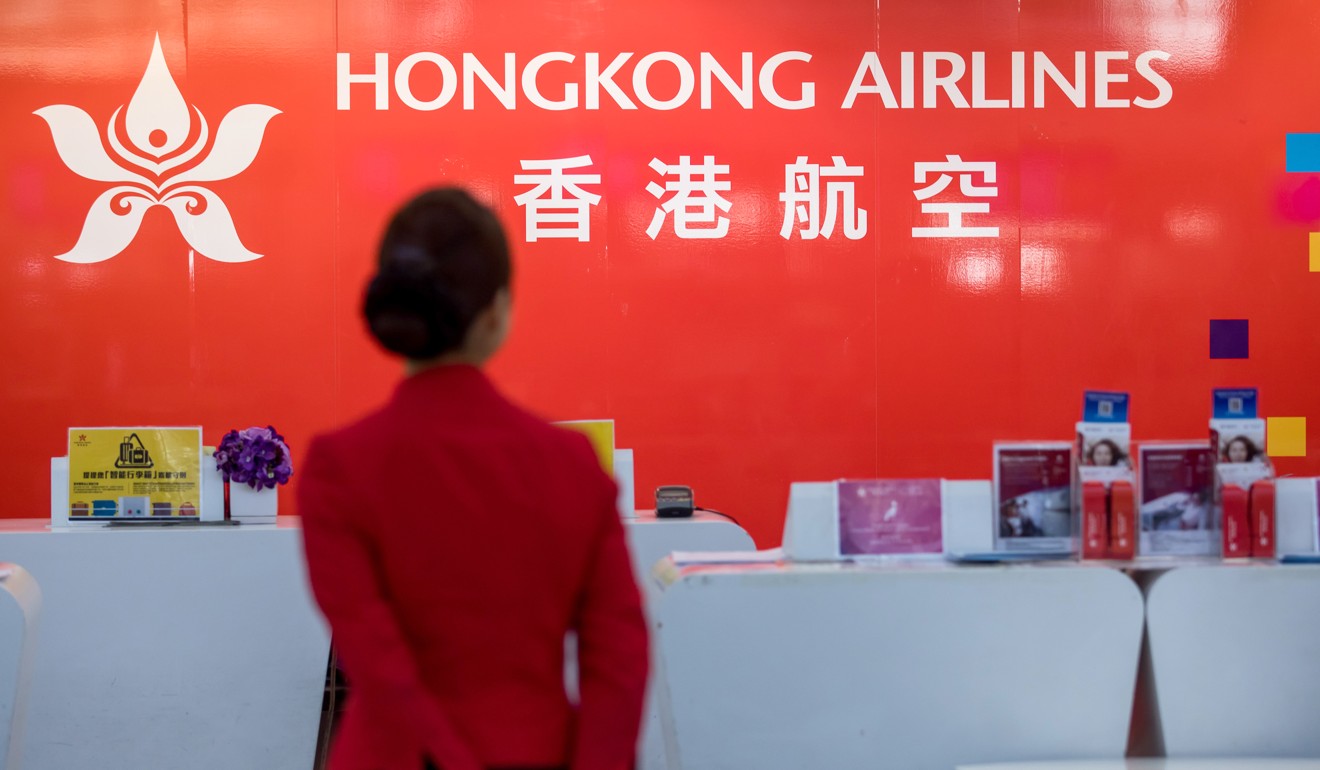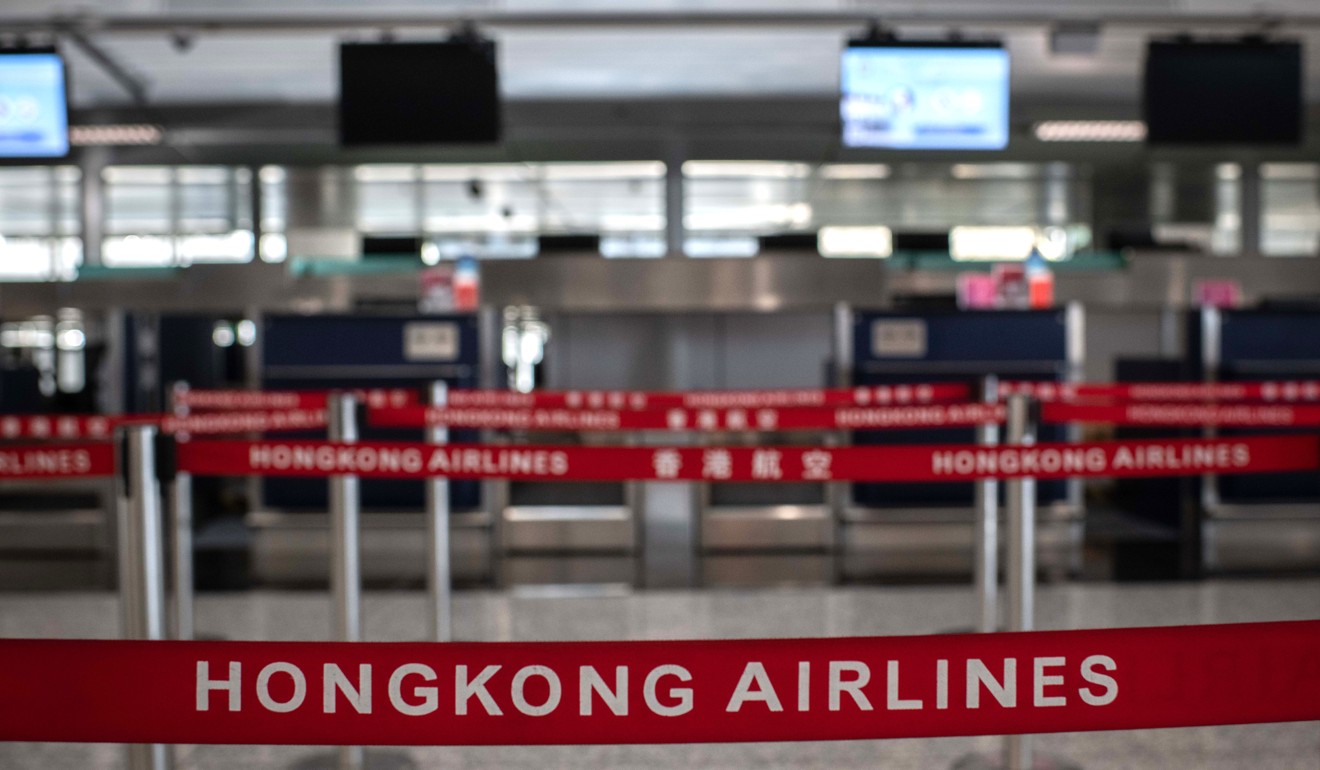
Hong Kong Airlines to cut hundreds of jobs as its finances worsen amid coronavirus outbreak
- City’s third biggest carrier is facing fresh financial crisis as its expected income from air tickets has reduced drastically due to cancellation of flights to mainland China
- The airline has been walking a financial tightrope for more than a year amid anti-government protests and the coronavirus outbreak

Hong Kong Airlines, the sole hometown competitor to Cathay Pacific, is finalising plans to cut hundreds of jobs imminently, the Post has learned, as the worsening coronavirus outbreak throws the HNA-backed company’s existence into further uncertainty.
The city’s third biggest carrier is facing a fresh financial crisis as its expected income from air tickets has reduced drastically due to a massive cancellation of flights to mainland China amid the outbreak.
With the beleaguered carrier employing around 3,500 people, several hundred jobs are at risk, as was previously reported by the Post. Pilots and cabin crew, who form the bulk of the employees, remain the most vulnerable.
The airline has walked a financial tightrope for more than a year as Hong Kong’s months-long anti-government protests and the coronavirus outbreak have caused a sharp downturn in air travel.

Sources said the airline had been forced to act quickly amid the new financial crisis, despite receiving a cash bailout late last year.
Creditors have demanded payment from the airline for overdue services, while the Hong Kong Airport Authority also impounded several of its aircraft.
To combat the spread of the novel coronavirus, mainland authorities have ordered all airlines to offer refunds to passengers for all cancelled flights.
The move has hit the airline hard, while the Hong Kong government’s decision to halve flights to the mainland to help limit the spread of the epidemic dealt another blow.
With 40 per cent of the airline’s flights leaving Hong Kong for mainland China on a normal day, it is especially hard hit and carries far fewer transit passengers than Cathay Pacific to fill empty planes.
Hong Kong Airlines has reduced its flights to the mainland from 134 to 69 per week. The carrier cut 214 mainland flights over recent days and into the next week, lasting up to February 10.
As of January 1, the airline employed 3,481 people, but the loss of regional and long-haul routes and a reduction from 39 planes to 28 are likely to see that number slashed.

The company on Friday described the current situation as “of grave concern”.
It said it had been reviewing its operating crew and general staff “requirements” as part of its “ongoing consolidation drive to achieve a leaner and more efficient structure”.
A spokeswoman added: “We will manage our manpower resources to ensure it aligns with our adjusted flight schedule and an optimised fleet.”
The airline’s operations remained normal, the company stressed.
It also said it expected a “sustained weak travel demand” to continue into the second quarter of 2020. “Recovery will be slow,” the spokeswoman added.
Fitch Ratings on Friday said Asia-Pacific carriers were most likely to suffer from the effects of the outbreak and the “duration, scale, and geographic spread” of the crisis would determine the credit profiles of various airlines if the situation worsened.
Qantas Group CEO Alan Joyce said some Asian carriers could fall into bankruptcy.
“A lot of airlines may not be able to keep some of their operations going,” Joyce told Bloomberg on Thursday. “It’s survival of the fittest.”
The coronavirus cases on the mainland have surpassed those during the Sars (severe acute respiratory syndrome) outbreak of 2002-03 and their impacts on travel are beginning to look increasingly similar.
At the peak of the Sars outbreak in April 2003, the demand for air travel in Asia collapsed by 45 per cent. Globally, air traffic fell 19 per cent that year. The outbreak cost an estimated US$40 billion to the global economy.
But the demand for travel rebounded quickly within several months.
“The current outbreak has the potential for a more pronounced effect on global aviation,” Fitch said. “This is because the number of Chinese air passengers has increased sharply since the Sars outbreak to over 600 million in 2018, from 86 million in 2003.”